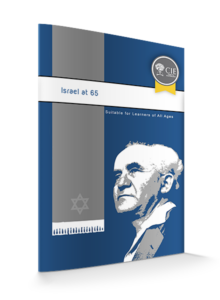Israel curriculum primarily focuses on Israel and not on Jewish studies or Jewish history. Of course, the context of modern Israel history or Israel studies evolves from the Jewish past. Here we are focusing on Zionism and Israel for formal and informal education settings. The following component elements are provided:
• Key curated essentials
• Self-learning, on-demand units
• Age-appropriate curriculum guides
• Teaching outlines and lesson plans
• Suggested terms, ideas and concepts
• Research bibliographies
• College syllabi
• Weekly Torah portion

“Israeli Culture and Society: 1880-Present” Eli Sperling, Emory University, Spring/Fall 2019 Upon its inception, Zionism needed more than political and financial solutions to actualize a Jewish home in Palestine. It was necessary for the architects…

“Zionism: Ideology and Practice in the Making of a Jewish State” Scott Abramson, UCLA, Winter 2020 This course tells the biography of Zionism. Uniting social, intellectual, cultural and political history, it exhibits its subject in…

August 10, 2025 Updated August 11, 2025, with follow-up resources. CIE and partners including including Hillels of Georgia, American Jewish Committee, the Jewish Federation of Greater Atlanta’s JTeen initiative, the Anti-Defamation League, the Jewish Community…

The course syllabi were all used in college-level courses and are appropriate for advanced teen and adult education enrichment. The content and objectives of each course are reflected in the short introductory paragraph. Often the reading,…

This section offers easy access to names, events, and terms associated with modern Israeli history. Terms listed were used successfully by students for understanding context in learning about modern Israel and the Middle East.
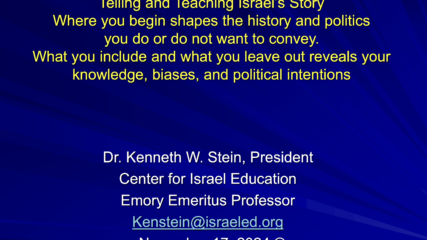
Where you choose to begin or tell or remember it shapes the history and politics you do or do not want to convey. What you include and what you leave out reveals your knowledge,
biases, and political intentions.
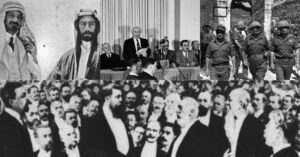
Explore the pivotal events, influential leaders, and crucial decisions from the Ottoman era to the Yom Kippur War that transformed the Land of Israel into the hard-earned home of the first Jewish state in 2,000 years but also the site of continual intercommunal violence.
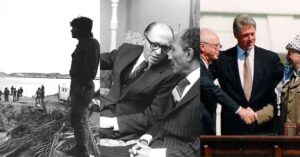
Unfold six Arab states’ embrace of Israel since 1973 out of national interests and U.S. mediation, sidelining the Palestinian movement, and explore Hamas’ Oct. 7, 2023, attack and its implications for the Israeli-Palestinian conflict and Israeli diplomacy.
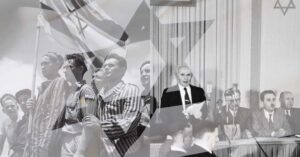
Delve into the roots of Jewish peoplehood and the pivotal moments in Jewish history that led to the rebirth of Israel in 1948. Explore how precarious Diaspora life and outbursts of violent antisemitism catalyzed Jewish self-determination. Examine how Jewish leaders employed compromise, perseverance and adaptation in interactions with the Ottomans, British, and Arabs to overcome challenges, and so much more.

Dance along as waves of Jewish immigration mix with indigenous traditions to create a unique culture reflecting a world of Jewish and non-Jewish influences across Israel’s diverse society.
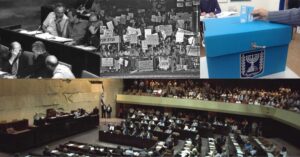
Explore the connections between the self-reliance, resilience, and democratic local self-governance Jews developed and nurtured in the Diaspora and the institutions and systems that define the complex parliamentary democracy of the State of Israel and the role of nongovernmental organizations.
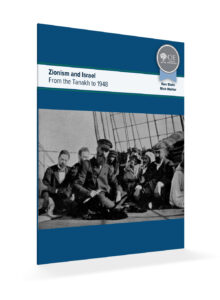
Zionism and Israel: From the Tanakh to 1948 explores the foundations of the centrality of the Land of Israel to the Jewish people and how the relationship between the people and the land evolved over time. Activities and background information are provided to help learners explore the growth of the Jewish Diaspora, the evolving relationship between the people and the Land and the origins of the Zionist movement. Following the First Zionist Congress in 1897, Zionism and Israel: From the Tanakh to 1948 shifts to explore how the Basle Declaration and subsequent documents guided the movement’s actions towards its vision for a Jewish State. The material concludes with an exercise on Israel’s Declaration of Independence.
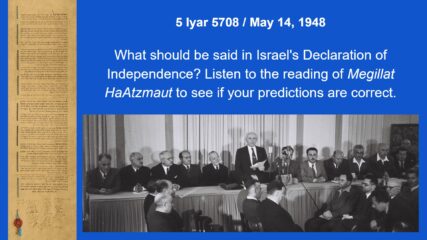
Pressman Academy in Los Angeles, part of CIE’s Day School Initiative, has graciously shared its Megillat HaAtzmaut and accompanying, grade-specific lesson plans for exploring Israel’s Declaration of Independence at Yom Ha’Atzmaut. Reading of Megillat HaAtzmaut:…

This video, prepared as Israel approached its 73rd birthday in 2021, incorporates multiple perspectives on the previous year. Have members of your class, in small groups or collectively, create a similar video addressing the highs…
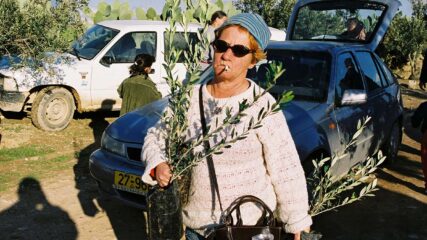
In ancient Israel, Tu B’Shvat was the day when farmers offered the first fruits of their trees in the form of a tithe or tax to the Temple after the trees had turned 4 years old.
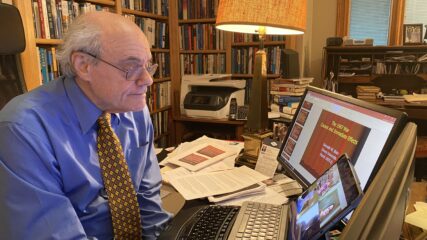
On January 1, 2022, I completed 43 years of teaching at Emory University. It was a great run and great fun. Along the way, I accumulated more pieces of paper than was necessary, among them…

CIE asked friends and experts in the field of Israel Studies to discuss the challenges and successes of the State of Israel in this past year, and to reflect on the coming year. Below, we…

Jerusalem Day, or Yom Yerushalayim in Hebrew, is a commemoration of the reunification of Jerusalem after the Six-Day War in June 1967. It is celebrated on the 28th day of the Hebrew month of Iyar.
On this day, the city is pampered and beautified just for the sake of celebration. So what typically takes place on this special day? Examples include official ceremonies, tours, tastings, a festive parade, a lot of music, unique characters with a story and everything Jerusalem has to offer.
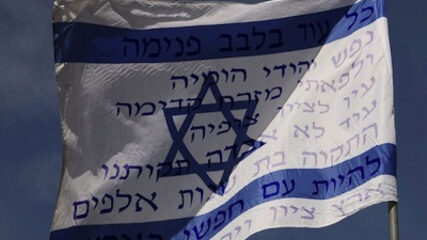
“Hatikvah,” Israel’s national anthem, describes the hope of the Jewish people to be and remain free in the Land of Israel. Its story parallels the Zionist progression from ancient connection to the land to the present. By creatively using the anthem’s contents, one touches on Israeli music, self-determination, immigration, state-building, art and the state’s Basic Laws.
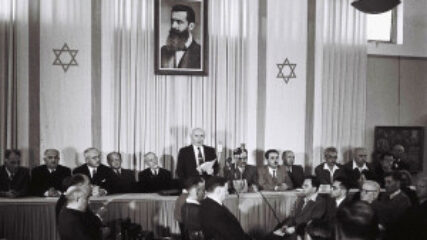
Israel’s Declaration of Independence is the source document of the Jewish state. Here we present a number of engaging learning activities for unpacking the document and helping learners interpret and make meaning for the past and present
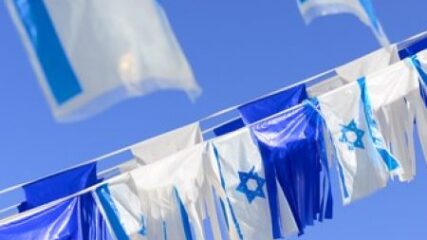
Israel declared its independence on May 14, 1948. Every year since, we celebrate the rebirth of the modern Jewish state on the 5th of Iyar which was the date of independence on the Hebrew calendar. The resources provided here will assist you in bringing your community together to celebrate this joyous day.

Yom HaZikaron (Day of Remembrance) is Israel’s Memorial Day. In the early years of statehood, memorials for soldiers who had fallen in the 1948 War of Independence were held on Yom Ha’Atzmaut, Israel’s Independence Day. After Prime Minister David Ben-Gurion appointed a special committee, the memorials were moved to the 4th Iyar, the day before Yom Ha’Atzmaut. The day was anchored into Israeli law in 1963 with the passage of the Heroes’ Remembrance Day (War of Independence and Israel Defense Army) Law. This law was amended in 1980 to Memorial Day for the Fallen of Israel’s Wars Law.

Between Passover and Shavuot, Israel and world Jewry have three special days of memory and celebration: Yom HaShoah, Holocaust Memorial Day, Yom HaZikaron, Israel Memorial Day; and Yom Ha’Atzmaut, Israel’s Independence Day. While these days are typically marked by community ceremonies and celebrations, gathering together is not possible this year. The resources provided here will assist you in bringing your community together for Yom Hashoah, Holocaust Memorial Day, online in new and meaningful ways.









